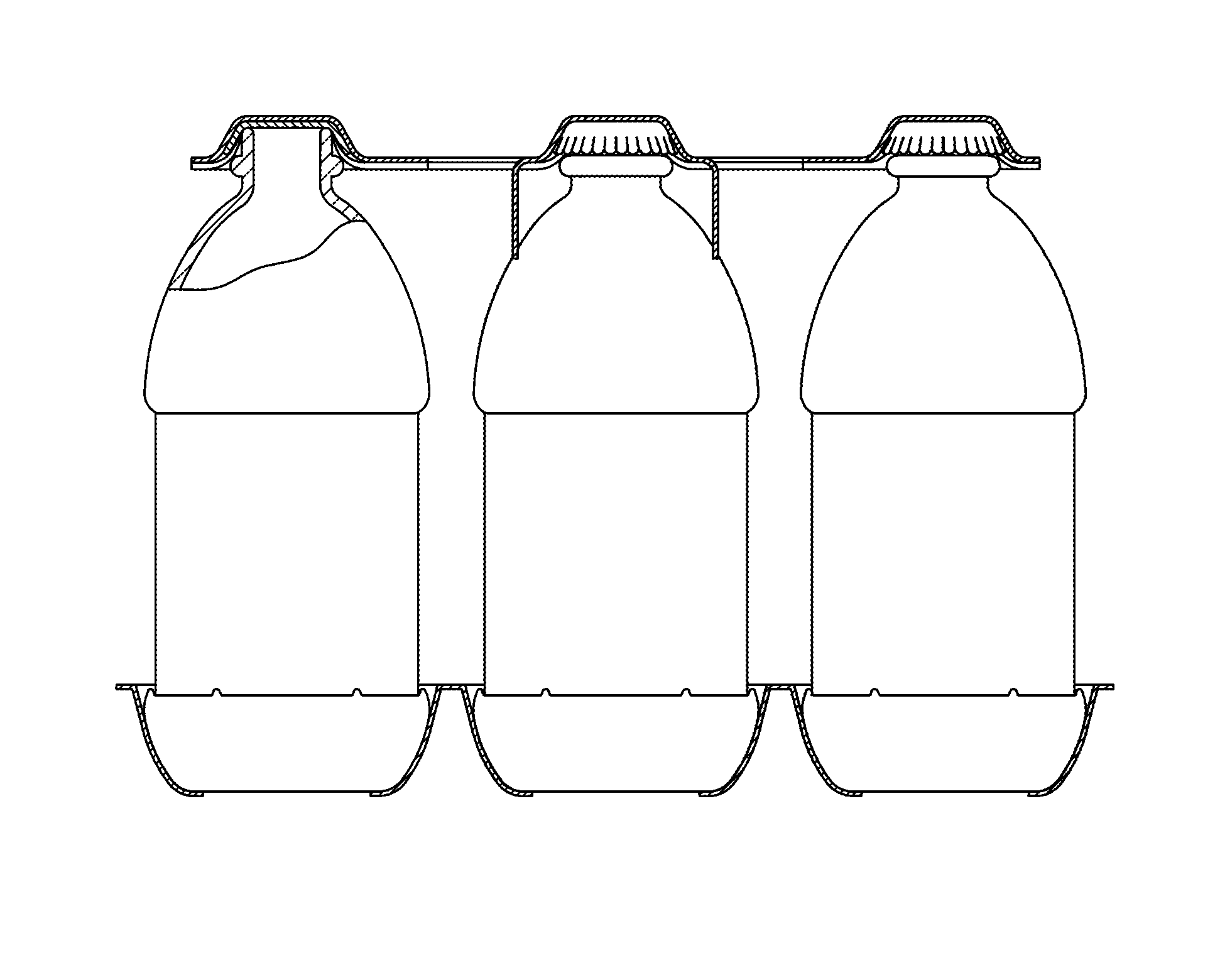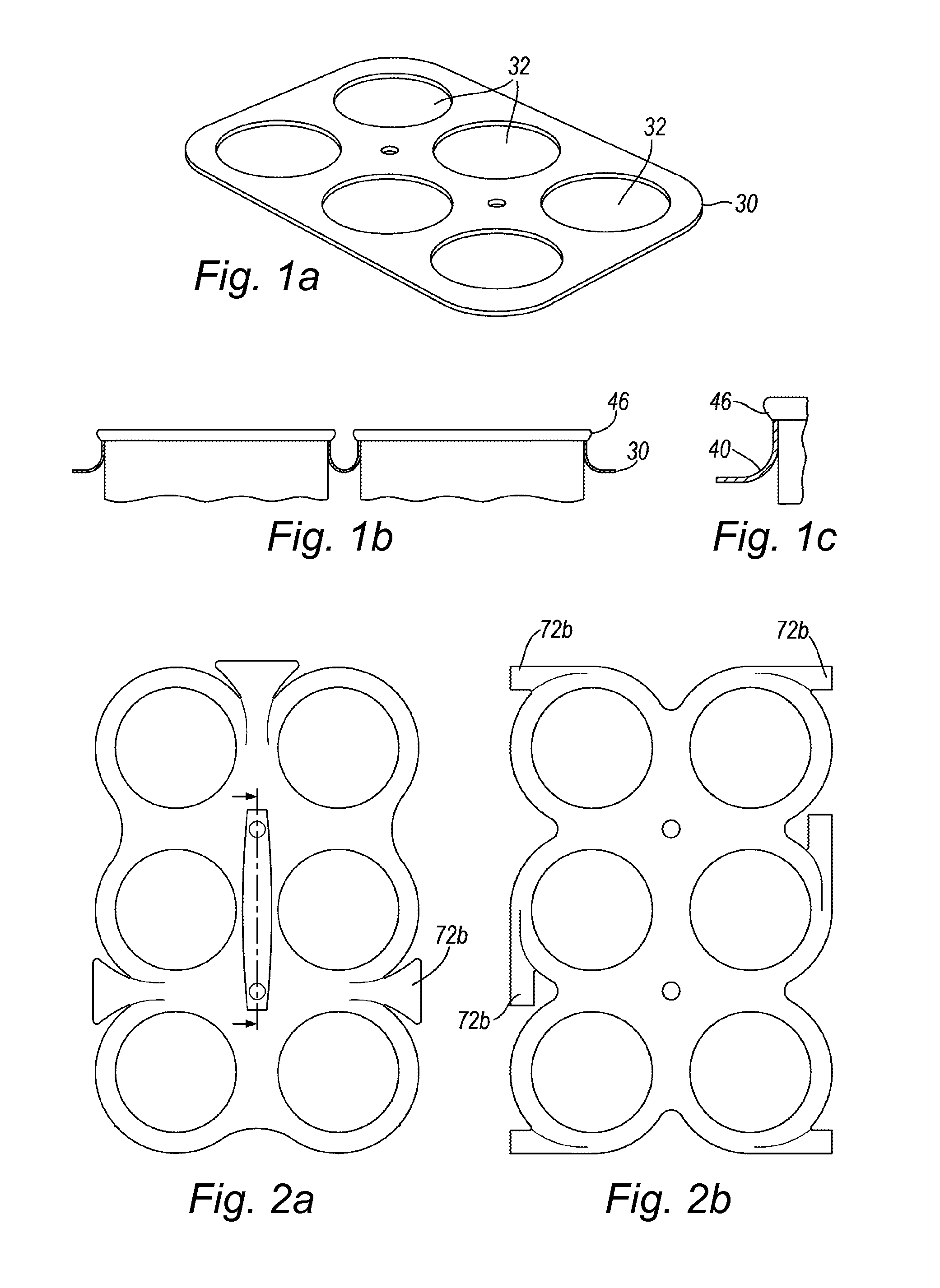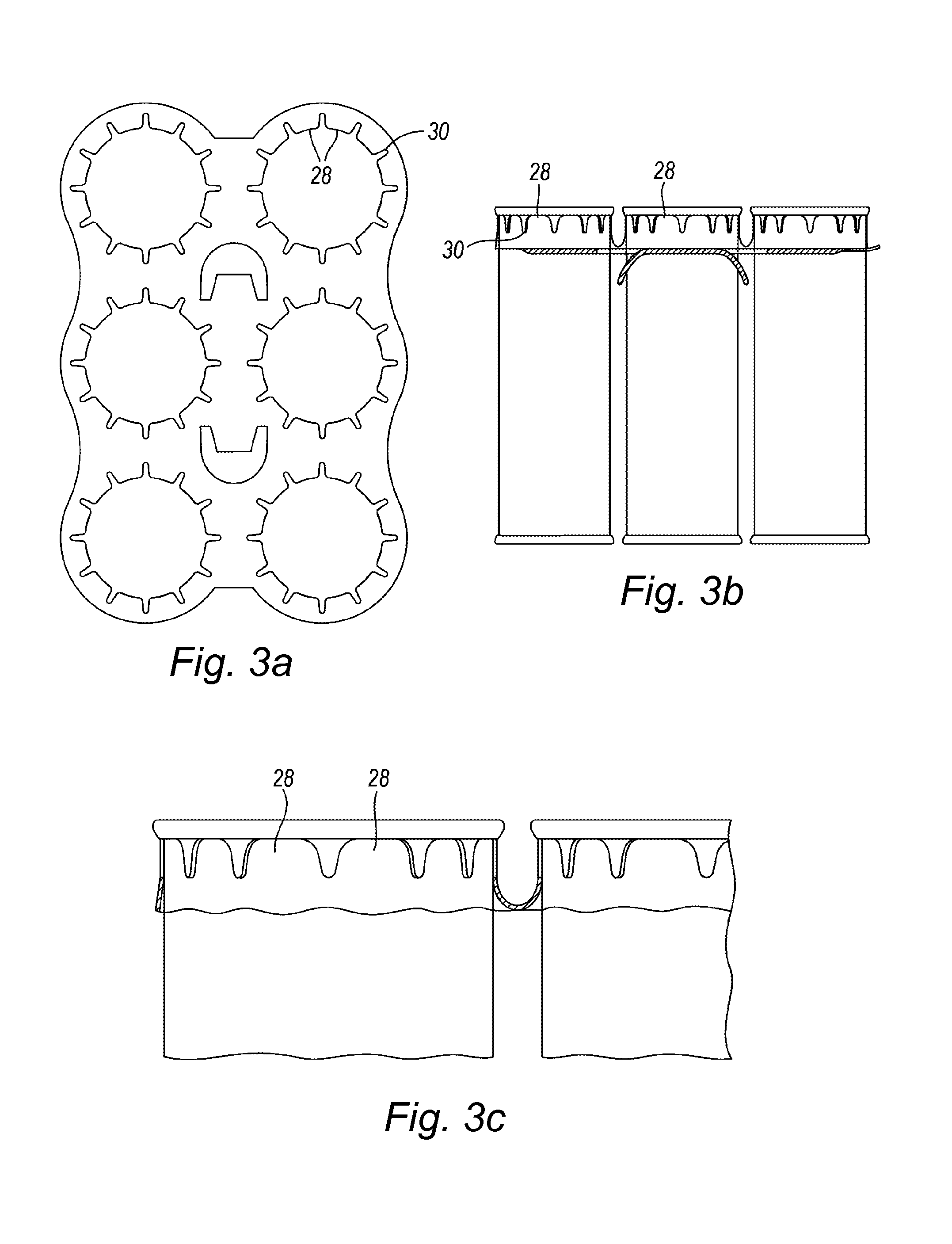Machine and system for applying container carriers to containers
a container carrier and machine technology, applied in the field of machine and system for applying container carriers to containers, can solve the problems of requiring extraordinary force for the cans to loosen from the retainer device, the carrier cannot be re-used, and the further movement required a considerable amount of force to releas
- Summary
- Abstract
- Description
- Claims
- Application Information
AI Technical Summary
Benefits of technology
Problems solved by technology
Method used
Image
Examples
Embodiment Construction
[0063]There will now be described, by way of example only, the best mode currently contemplated by the inventor for carrying out the present invention. In the following description, numerous specific details are set out in order to provide a complete understanding to the present invention. It will be apparent to those skilled in the art, that the present invention may be put into practice with variations of the specific.
Carrier Stock for Unitizing Containers
[0064]The present invention shall now be described with reference to a first embodiment as shown in FIGS. 8a-c. FIGS. 8a and 8b show first and second perspective views of an arrangement of five beer cans retained by plastics film stock having six container apertures.
[0065]The plastics film is shown in plan view in FIG. 8c. Each aperture 80a is of a general square shape, operably arranged to accept a circularly cylindrical part of a container therethrough, with four fingers or tabs 81, 82, 83&84 extending from indentations or trou...
PUM
 Login to View More
Login to View More Abstract
Description
Claims
Application Information
 Login to View More
Login to View More - R&D
- Intellectual Property
- Life Sciences
- Materials
- Tech Scout
- Unparalleled Data Quality
- Higher Quality Content
- 60% Fewer Hallucinations
Browse by: Latest US Patents, China's latest patents, Technical Efficacy Thesaurus, Application Domain, Technology Topic, Popular Technical Reports.
© 2025 PatSnap. All rights reserved.Legal|Privacy policy|Modern Slavery Act Transparency Statement|Sitemap|About US| Contact US: help@patsnap.com



